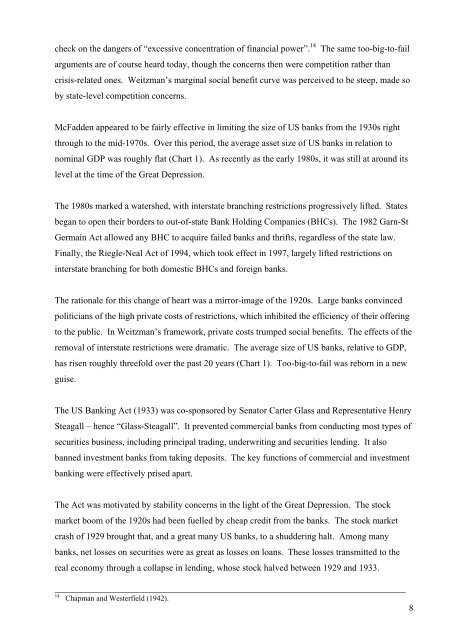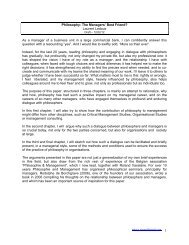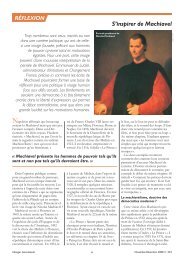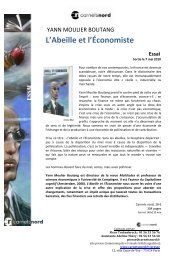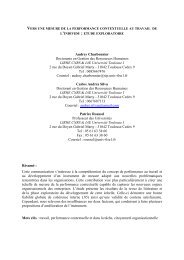The $100 billion question - Signal Lake Venture Fund
The $100 billion question - Signal Lake Venture Fund
The $100 billion question - Signal Lake Venture Fund
Create successful ePaper yourself
Turn your PDF publications into a flip-book with our unique Google optimized e-Paper software.
check on the dangers of “excessive concentration of financial power”. 14 <strong>The</strong> same too-big-to-fail<br />
arguments are of course heard today, though the concerns then were competition rather than<br />
crisis-related ones. Weitzman’s marginal social benefit curve was perceived to be steep, made so<br />
by state-level competition concerns.<br />
McFadden appeared to be fairly effective in limiting the size of US banks from the 1930s right<br />
through to the mid-1970s. Over this period, the average asset size of US banks in relation to<br />
nominal GDP was roughly flat (Chart 1). As recently as the early 1980s, it was still at around its<br />
level at the time of the Great Depression.<br />
<strong>The</strong> 1980s marked a watershed, with interstate branching restrictions progressively lifted. States<br />
began to open their borders to out-of-state Bank Holding Companies (BHCs). <strong>The</strong> 1982 Garn-St<br />
Germain Act allowed any BHC to acquire failed banks and thrifts, regardless of the state law.<br />
Finally, the Riegle-Neal Act of 1994, which took effect in 1997, largely lifted restrictions on<br />
interstate branching for both domestic BHCs and foreign banks.<br />
<strong>The</strong> rationale for this change of heart was a mirror-image of the 1920s. Large banks convinced<br />
politicians of the high private costs of restrictions, which inhibited the efficiency of their offering<br />
to the public. In Weitzman’s framework, private costs trumped social benefits. <strong>The</strong> effects of the<br />
removal of interstate restrictions were dramatic. <strong>The</strong> average size of US banks, relative to GDP,<br />
has risen roughly threefold over the past 20 years (Chart 1). Too-big-to-fail was reborn in a new<br />
guise.<br />
<strong>The</strong> US Banking Act (1933) was co-sponsored by Senator Carter Glass and Representative Henry<br />
Steagall – hence “Glass-Steagall”. It prevented commercial banks from conducting most types of<br />
securities business, including principal trading, underwriting and securities lending. It also<br />
banned investment banks from taking deposits. <strong>The</strong> key functions of commercial and investment<br />
banking were effectively prised apart.<br />
<strong>The</strong> Act was motivated by stability concerns in the light of the Great Depression. <strong>The</strong> stock<br />
market boom of the 1920s had been fuelled by cheap credit from the banks. <strong>The</strong> stock market<br />
crash of 1929 brought that, and a great many US banks, to a shuddering halt. Among many<br />
banks, net losses on securities were as great as losses on loans. <strong>The</strong>se losses transmitted to the<br />
real economy through a collapse in lending, whose stock halved between 1929 and 1933.<br />
_____________________________________________________________________________<br />
14<br />
Chapman and Westerfield (1942).<br />
8


